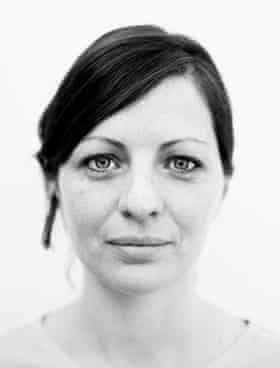 |
| Tbilisi, Georgia, 2006. Photograph: Olivia Arthur/© Olivia Arthur/Magnum Photos |
Inside a women’s prison in Tbilisi: Olivia Arthur’s best photograph
‘There were groups of prisoners laughing and shouting – and then there was this woman on her own out by the stairs, just gazing out of the window’
Interview by Michael Segalov
Wed 14 Jul 2021 13.36 BST
I
My thoughts have also been shaped by becoming a mother, realising it’s only when I run out of options – or, more accurately, determination – that I send one of my children to their room and shut the door. Recently, I started reading prison memoirs by women: Brits, Italians, Egyptians, Americans, Russians and Iranians. Many write about brutal conditions, the difficulties in finding ways to survive, remain dignified and sane. Others reflect on whether, in locking women away, society might be trying to fix the wrong problem.
I’m fascinated by the difficult circumstances that led these women to prison – and why many of them end up returning. There is this line in Who Lie in Gaol, Joan Henry’s 1952 book about her time as a British prisoner, that spoke to me: “I thought of the good and the evil that is in all of us, and of the whirlpool of circumstance that had brought half a dozen women together in the night in a locked room in a building full of locked rooms.”
With my head consumed by all these thoughts, I recently looked back through my archive and found photographs I had taken in 2006 at the women’s prison in Tbilisi, Georgia. Back then, I was making a project called The Middle-Distance, looking at life for young women on the border between Europe and Asia. I had already spent three months there, finding stories about the expectations and pressures on young women, starting in Istanbul, then going down through Turkey, the Caucasus and on to Russia. In Georgia, I met someone who knew the Tbilisi prison and they arranged a visit.
I was allowed to spend an afternoon there and was shown around by some inmates. I was surprised when I entered: there was no uniform, and groups of women were laughing and shouting. I was rushed from one place to the next, from the dining room to the chapel. I photographed a young woman who did beautiful needlework. Some posed with guards, others alone. There were those who kept themselves to themselves, away from the groups and chatter. Then there was this woman on her own out by the stairs, just gazing out of the window. Eventually, an image of women posing together on a bed was used in the project’s exhibition.
Fifteen years later, when I went back through my contact sheets, my eyes were drawn to this image, one I’d never considered much. In most of my pictures, the focus is on the people: who they are, their expressions. But looking afresh at this image of the woman on the stairs – removed from the scenes of noise and joviality in the dorm, looking for her own space alone – it made me think of the voices in the memoirs.
Today it speaks to me about the process of keeping distant, of staying removed from an experience that has been forced on her. Mostly, I am drawn to the fact that she is this mysterious, abstract figure. You would have no idea she was in prison unless you were told. And if my reading has taught me one thing, it is that you or I could quite easily end up in her place.
Way for Escape, Magnum’s square-print sale, runs until 18 July.
Olivia Arthur’s CV



No comments:
Post a Comment